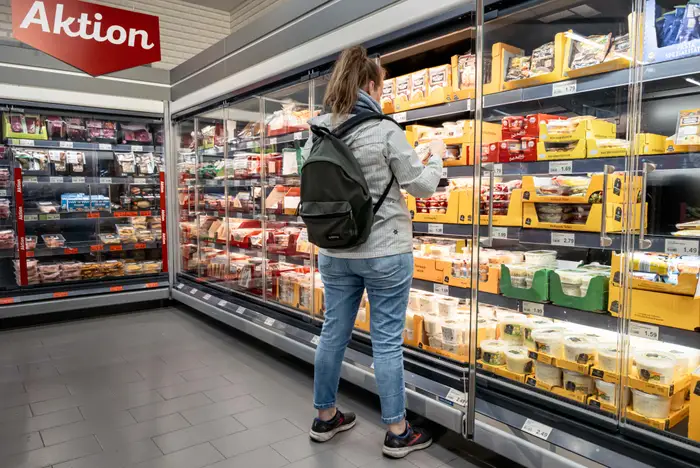‘It seems inevitable’: A $254 million hedge fund manager warns that banking and fiscal crises are coming as reckless government spending gets out of hand — but investors can avoid the pain by making these 5 moves

- Investors should prepare for fiscal, banking, and energy crises, a hedge fund manager warned.
- Praetorian Capital’s Harris Kupperman shared why he’s not hopeful right now.
- With turbulence expected ahead, he outlined five types of investments.
Harris Kupperman, the manager of a hedge fund, insists he isn’t a perpetual pessimist, but those who get that impression from reading his colorful quarterly reports could be forgiven.
“I believe there is a coming energy crisis, wrapped in a banking crisis, engulfed in a fiscal and monetary crisis, and I anticipate that this will create epic opportunities, surrounded by risk and massive volatility,” Kupperman wrote in his Q2 investor letter.
But Praetorian Capital Management’s president believes that others in the market have gone insane, not him. He doesn’t know when the day of reckoning will come, but he’ll be ready when it does.
“I don’t feel like I’m saying crazy things,” Kupperman told Insider recently. “I don’t feel like I’m a doomsday prophet or anything.”
Kupperman’s instincts have served him well in recent years. From the beginning of 2019 to the end of Q2, his Praetorian Capital Fund returned more than 658% net of fees. In 2023, the $254 million hedge fund has risen 16.8% after fees thanks to a strong July performance. That follows a year in which it earned a 12% net return while the market tanked.
Kupperman likes highly volatile markets. And, despite a lackluster first half, he’s ready for mayhem, even if other investors aren’t.
“I thrive in environments like this,” Kupperman wrote in his letter. “After several consecutive quarters of rather mundane results, I’m looking forward to some volatility.”
Brace for volatility as banking, energy crises ensue
In August, US stocks took a beating as rising bond yields halted the summer market rally.
Bond prices and yields move in opposite directions, so higher yields indicate lower demand for debt coupons. Many market observers attribute the bond selloff to unexpected economic resilience, which has increased the likelihood of further interest rate hikes. Bond yields and interest rates are often correlated.
Kupperman, on the other hand, has another explanation: a reduced appetite for US Treasuries. He believes the government’s spending spree, which is at the heart of a political battle that many pundits predict will result in a government shutdown, will spiral out of control in the near future.
“People forget that we’ve ran huge deficits, and everyone just assumes that’s the normal state of affairs, and everyone assumes that’s just sustainable and continuous,” Kupperman said. “However, we ran these deficits because foreigners wanted to buy our bonds because they were high-quality collateral and safe.” As a result, we simply kept selling these bonds to foreigners. I believe foreigners have finally realized that we will continue to run deficits indefinitely.”
“It’s one thing if you run a 1%, 2%, or 3% deficit and your economy is growing,” Kupperman continued. But when you’re running 80% deficits with a 2% growth rate, the joke’s on the guy lending to you. And you’ve seen foreigners stop buying our bonds and instead sell them, which is why the bonds keep falling.”
Reluctance to buy Treasuries, combined with continued issuance of government debt, should drive bond prices lower and yields higher, according to Kupperman. He predicted that the 10-year US Treasury yield would rise to 6% within the next year or so, noting that this level is not even historically high.
“I don’t think people are ready for 6%,” said Kupperman. “I believe it simply destroys a lot of things in terms of business.” But when you look at 6% over the last 50 years, it’s right in the middle of where it’s been historically.”
Banks, according to Kupperman, are also in serious trouble, and it’s not just regional banks that S&P downgraded on Tuesday after experiencing confidence crises earlier this year.
Financial institutions make money by borrowing at low short-term rates and lending at higher long-term rates, but according to Kupperman, many are now facing the opposite dynamic. A high federal funds rate increases the cost of borrowing for banks, which are also forced to lend to some at near-zero rates while paying depositors up to 5% on their cash.
While banks can postpone their losses, Kupperman believes their system is unsustainable and that they are only postponing their multibillion-dollar headache. Restructurings of underperforming debt are also on the way, according to the hedge fund manager, though he is unsure when.
“I think you have a banking crisis,” Kupperman said. “It seems inevitable.”
Investors should be concerned about a third potential crisis, according to Kupperman. The Praetorian Capital president has long warned that energy demand is far outstripping supply, predicting that oil prices would rise to $400 to $500 per barrel in the coming years, up from $78 today.
According to Kupperman, the world consumes far more oil than it produces, and demand is rising in tandem with global living standards. Energy capacity isn’t growing at the rate it should, he says, because oil producers have few incentives to increase output given the industry’s long-term outlook and because renewable energy isn’t widely available yet.
Oil prices fell when government reserves were released, but Kupperman believes that is not a long-term recipe for reasonable energy prices. He predicts that oil prices will skyrocket in 2024 or 2025, benefiting companies that rely on the commodity.
5 places to invest in a shaky environment
Kupperman does not have a specific timeline for the fiscal, banking, and energy crises he sees coming, but as he stated in his letter, he is prepared for disaster.
“While the outcome is clear, the path to get there isn’t always clear,” wrote Kupperman. “When in doubt, I reduce exposure and wait for an obvious signal, especially when risks appear elevated and opportunities appear diminished, as they do today.”
Investors who believe in Kupperman’s market convictions should own companies with cash flows tied to hard assets. While he does not make recommendations, he does mention five investments worth considering in his letter, some of which he has previously discussed with Insider.
Kupperman is most excited about uranium investing, which he is doing through the Sprott Physical Uranium Trust. While the nuclear energy component has remained stagnant after soaring from the low $30s to nearly $60 between mid-2021 and the end of Q1 2022, Kupperman believes it is only a matter of time before it breaks out of its trading pattern.
The uranium market, like the oil market, has a massive supply-demand imbalance, according to Kupperman. As part of the boom-bust commodity cycle, higher prices cause a surge in production, which leads to a supply glut, which induces bankruptcies, resulting in shortages that raise prices all over again.
Unlike oil, logistics are the primary reason for uranium scarcity. Kazakhstan and Uzbekistan account for slightly more than half of global uranium production, according to Kupperman, but a slew of geopolitical issues, including the Russia-Ukraine conflict, make it difficult for those countries to export uranium to Western countries at the moment.
In the absence of a sudden end to the war or a change of heart from neighboring countries that don’t want uranium to cross their borders, the hedge fund manager believes uranium suppliers will be forced to break their contracts, resulting in a sharp drop in supply, which will drive up prices.
Energy service companies will also benefit from the oil supercycle predicted by Kupperman. His belief in a supply shock remains unchanged, and while he did not list stocks to buy right now, he did express a preference for Valaris (VAL) and Tidewater (TDW) through 2022. Kupperman believes that owning oil futures, ETFs, or options outright is also prudent.
Outside of commodities, Kupperman stated in his most recent quarterly letter that he is bullish on St. Joe (JOE), a land development firm based in the Florida Panhandle. He believes the region will continue to be a haven for those seeking refuge from high taxes and “problems of large cities.” St. Joe also has the potential for 30% to 50% revenue growth and high returns on invested capital, according to the fund manager.
Finally, in his letter, Kupperman highlighted small newspaper companies transitioning to the digital world. He noted that digital revenue growth is finally catching up to lower print revenue, which is a higher margin business with better returns on capital, but valuations do not reflect the opportunity.






